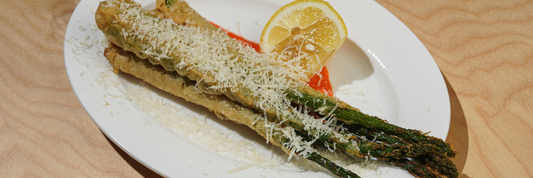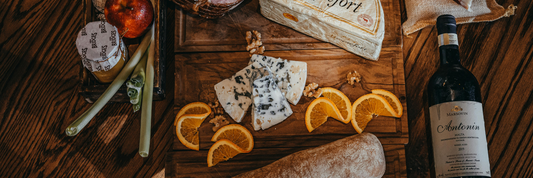Cutting boards come in various shapes, but their design is more than just aesthetics—it impacts how you prep, serve, and store. Among these, round cutting boards stand out for their versatility and style. How do they compare to rectangular, square, or oval options? Let’s dive in and find out.
What is Round Cutting Board?
Round cutting boards are circular kitchen surfaces used for chopping, slicing, dicing, and serving. Unlike their rectangular counterparts, round boards offer a sleek, space-efficient design that’s particularly useful in smaller kitchens or for decorative purposes. These boards have been a staple in kitchens for centuries, evolving from basic wooden planks to intricate designs crafted from various materials like marble, glass, and resin.

Types of Round Cutting Boards
Round Wood Cutting Board
- Hardwood Options:

-
Softwood Options:
- Pine: Affordable and lightweight, though less durable.
- Bamboo: Technically a grass, bamboo is eco-friendly, lightweight, and naturally antimicrobial.
Plastic Round Cutting Boards
Plastic cutting boards are known for their affordability, lightweight design, and easy maintenance. They’re dishwasher-safe and come in vibrant colors, making them a practical choice for everyday use.

Glass Round Cutting Boards
Glass cutting boards are favored for their elegant appearance and hygienic surface. However, they can dull knives quickly and are often best used for decorative purposes or serving.
Specialty Round Cutting Boards
- With Handles: Great for easy carrying and serving.
- Reversible: Offers two sides, often with one side for cutting and the other for serving.
- With Juice Grooves: Ideal for cutting meats or fruits, as the grooves collect excess juices, preventing mess.
Uses and Benefits of Round Cutting Boards
Culinary Applications
- Perfect for cutting, chopping, and slicing fruits, vegetables, and bread.
- Ideal for serving cheese boards, charcuterie, and pizzas.
- Versatile enough for kneading dough or as a trivet for hot pots and pans.
Aesthetic Appeal
Round cutting boards add a decorative element to kitchen spaces. They work beautifully as centerpieces for dinner tables or as rustic serving platters during events.
Functional Benefits
- Space Efficiency: Their circular design often fits better in tight spaces compared to rectangular boards.
- Versatility: Many round boards can double as serving trays, making them multifunctional.
Circular Cutting Boards vs. Other Shapes
| Feature | Round Cutting Boards | Rectangular Cutting Boards | Square Cutting Boards | Oval Cutting Boards |
|---|---|---|---|---|
| Design | Sleek, modern, and space-efficient. Ideal for aesthetics and serving. | Traditional, versatile, and highly functional. Commonly found in most kitchens. | Compact and simple but less common. | Elegant, with a unique shape that combines rounded and elongated edges. |
| Surface Area | Limited working space due to its circular shape. Best for small tasks or serving. | Offers the largest surface area, suitable for heavy chopping and multitasking. | Smaller surface area, mainly for light chopping or small kitchens. | Similar to round boards but provides slightly more space lengthwise. |
| Versatility | Excellent for chopping, slicing, and serving as a tray for pizza, cheese, or charcuterie. | Primarily for chopping and slicing but can also serve as a general-purpose board. | Best for cutting small items; less suitable for multitasking. | Great for chopping and serving; can function as a decorative serving tray. |
| Ease of Storage | Easy to store, fits well in corner spaces or smaller countertops. | Bulky, may require more storage space. | Compact and easy to store. | Takes up less storage space than rectangular boards but more than round ones. |
| Visual Appeal | Offers a unique, eye-catching look; doubles as a decorative item. | Practical but less visually striking. | Minimalistic but lacks distinctiveness. | Stylish and adds sophistication to food presentation. |
| Practical Use | Best for serving and light prep work. | Suitable for heavy-duty food prep, such as cutting large items like meat or bread. | Good for light tasks and small kitchens. | Ideal for serving and general chopping; less space for heavy prep. |
| Portability | Lightweight and easy to handle, especially if it has a handle. | Can be heavy and cumbersome, especially in larger sizes. | Lightweight and easy to carry. | Lightweight, but larger sizes may be less convenient. |
| Popularity | Gaining popularity due to its dual functionality as a cutting and serving board. | Most common and widely used cutting board shape. | Less common, often overshadowed by rectangular options. | Niche appeal for those who want a blend of round and rectangular functionality. |

Conclusion
Round cutting boards are a blend of functionality and style, making them a must-have for any kitchen. Whether you’re a home chef looking for a reliable surface or a host aiming to impress guests, a round cutting board adds value to your culinary endeavors. Explore the various types and materials to find the one that suits your needs, and don’t forget to maintain it properly for years of use.




